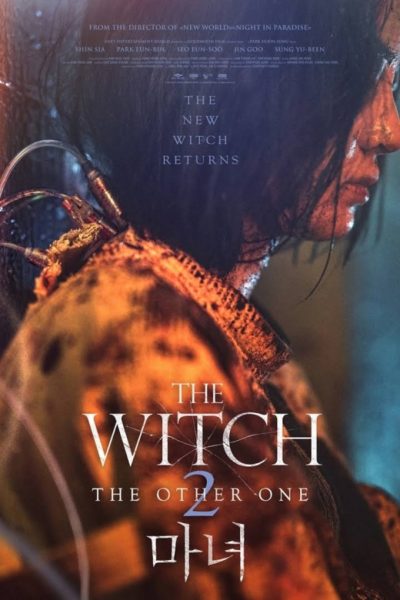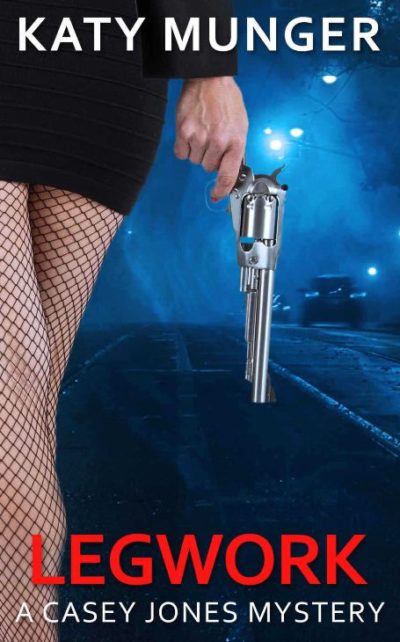Note: My previous reviews of this series had incorrect information on the series numbering, and about the relationship of this printing to the first one. That first printing had seven volumes. If Lincoln Square Books reprints all of the series, their edition will have six, because they combined the original Real Dangerous Girl and Real Dangerous Job (which form a single story arc) as Parts I and II of a single novel with the first title. However, they did NOT combine any of the later novels, which all have their original titles; the next two, including this one, were divided into Parts I and II to start with. I apologize to readers for the earlier misleading information; but a late correction is better than no correction!
Having read (and reviewed) the previous volumes in this action adventure series, all of which got high ratings from me, I was glad to follow along with this next installment. Most readers of this book will probably have read the earlier ones –and should have, since this series is one that absolutely needs to be read in order. (This review will contain some spoilers for the preceding book, though not for this one.) Likewise, most readers of this review will most likely have read my takes on the preceding volumes, so will already have a basic idea of Kim’s personality, family situation, and back history.) The main body of this story takes place on one day, mostly in a tense hostage situation, and Part I ends in a cliff-hanger in the very middle of that situation.
 The most obvious difference between the previous installments and this one is that we’re no longer in our familiar upstate New York setting. Landing on her feet at the conclusion of her previous adventure, our rough-edged heroine had wangled herself a job as chief of security for her deceased boss’ erstwhile newly minted partner, Mr. Karsh (whose business practices unfortunately aren’t any more ethical or strictly legal than the late Mr. Falcon’s, though he also aspires to a veneer of legitimacy). In the interim between the two books, his far-flung business enterprises have taken him to L.A. for an extended stay, so he’s re-located Kim and Donnie (I’d say she’s now at least 18, if not 19, and Donnie’s 12-13) there along with him. When our story opens, Kim’s making better money than before; she and Donnie can afford a better apartment, and Karsh’s gotten him into a private school that caters to special-needs kids. She’s thinking that their situation is looking up; but with her luck, it can go south very quickly. And then things get really hairy, when she finds herself, in a Karsh-owned equipment truck, in the middle of a late afternoon traffic jam on an elevated L.A. freeway, in which Donnie’s school bus is also stuck –and shooting and explosions start to happen.
The most obvious difference between the previous installments and this one is that we’re no longer in our familiar upstate New York setting. Landing on her feet at the conclusion of her previous adventure, our rough-edged heroine had wangled herself a job as chief of security for her deceased boss’ erstwhile newly minted partner, Mr. Karsh (whose business practices unfortunately aren’t any more ethical or strictly legal than the late Mr. Falcon’s, though he also aspires to a veneer of legitimacy). In the interim between the two books, his far-flung business enterprises have taken him to L.A. for an extended stay, so he’s re-located Kim and Donnie (I’d say she’s now at least 18, if not 19, and Donnie’s 12-13) there along with him. When our story opens, Kim’s making better money than before; she and Donnie can afford a better apartment, and Karsh’s gotten him into a private school that caters to special-needs kids. She’s thinking that their situation is looking up; but with her luck, it can go south very quickly. And then things get really hairy, when she finds herself, in a Karsh-owned equipment truck, in the middle of a late afternoon traffic jam on an elevated L.A. freeway, in which Donnie’s school bus is also stuck –and shooting and explosions start to happen.
That brings us to another difference, or set of differences, from the previous books. Here, the unity of time and location is much tighter. Events are also, in a sense, more straightforward. True, Kim doesn’t have a clue why a gaggle of heavily armed thugs have set off vehicle explosions that block 50 or 60 cars between them, with no escape, and neither do we as readers; Jeter will disclose their leader’s plan and motivation only very gradually. But figuring out who the enemy is here isn’t going to be a problem; they’re toting their assault rifles quite openly. There are also a number of scenes and events here to which Kim isn’t privy at the time. Given that she’s our first-person narrator, that’s a challenge to pull off, but Jeter does it successfully. He’s already used the technique, in previous books, of her describing a scene the way she imagines it went. (But as Kim says, “The thing about my imagination, though –I’m not usually wrong about whatever I come up with. Kind of a gift, that way.” :-) )
Here, he just has to use it a great deal more. Finally, there’s not a lot of moral ambiguity or grey areas in this tale; anybody who’s not morally brain-dead can recognize that the perpetrators aren’t doing good things, and Kim doesn’t need to agonize over whether it’s right to try to mess up their plans and hopefully get Donnie to safety -and herself and maybe others as well, if she’s lucky. That’s pretty much a given. The real question is whether she can rescue anybody. (The cover art here is highly misleading; Kim never has a pistol in her hand in this book.) Her treasured .357 is in her shoulder bag in her boss’ car (long story), and the head thug quickly relieved her of the Ladysmith in her thigh holster. So she’s unarmed, and not blessed with a physique that gives her much advantage in hand-to-hand combat, nor martial arts skills. But she does have guts, smarts, and determination; and her colleague Elton (whom we met in the previous book), who’s with her in the truck, has the same qualities.
The action-adventure aspect of the story is more prominent here than in the previous books (though Kim herself gets to display her chops only towards the end –she’ll more than make up for that, however!), and is presented with a good deal of tension, suspense, and excitement, punctuated by explosions and mayhem. (Hollywood disdains to adapt indie or small-press books as films; that’s their loss in this case, because the narrative has a highly cinematic quality. It would be tailor-made for adaptation as an action film, and would probably be very popular at the box office.) Strong characterization is an asset, as always in this series; Donnie in particular comes into his own here (and we actually learn what his medical condition is; it’s esophageal atresia, and compounded in his case with complications from surgical infection, it’s life-threatening). And don’t sell him short in a crisis, either; yeah, his legs are useless, but his big sister isn’t the only sibling in that family who’s got fighting spirit…. Bad language is restrained (no obscenity, and not much religious profanity), and there’s no sexual content; Jeter’s prose is vivid, and the narrative is fast-paced.
Continuity/editing issues, as in the previous book, are the one significant flaw here. An important plot point results from a scuffle that supposedly took place earlier; but in the earlier part of the book that describes that encounter, there was clearly no scuffle at all. At one point, Kim refers to being aware of something she actually couldn’t have known until later. Most glaringly, a character who’s shot dead with a close-range pistol bullet between the eyes appears two pages later, walking, talking and menacing people. In fairness, I had to deduct a star for those issues, but they didn’t keep me from really liking the book. (All of them could be fixed with fairly slight editing.) For series fans, it’s a must-read; and I think most fans of clean action-adventure, especially those who appreciate a protagonist from the distaff side, would greatly like this series if they’d try it.
Author: K. W. Jeter
Publisher: Lincoln Square Books; available through Amazon, both for Kindle and as a printed book
A version of this review previously appeared on Goodreads.
 The French film À l’interieur (a.k.a. Inside) is one of the most ferocious and intense of all action-heroine films. It’s the story of a pregnant woman who has to defend herself and her unborn child from an absolute psycho who turns up on the doorstep of her remote house one night. This film, more or less, has the same plot. It is, however, a pale imitation in just about every single way. Where À l’interieur was spare and taut, this is bloated and meandering. When it had nothing but excellent performances, the ones here are largely poor or worse. And while the French movie delivered on its hellish premise, this possesses almost no impact at all.
The French film À l’interieur (a.k.a. Inside) is one of the most ferocious and intense of all action-heroine films. It’s the story of a pregnant woman who has to defend herself and her unborn child from an absolute psycho who turns up on the doorstep of her remote house one night. This film, more or less, has the same plot. It is, however, a pale imitation in just about every single way. Where À l’interieur was spare and taut, this is bloated and meandering. When it had nothing but excellent performances, the ones here are largely poor or worse. And while the French movie delivered on its hellish premise, this possesses almost no impact at all.




 It has been a very quiet year for big-budget action heroine movies so far. Here we are, more than one-third of the way through 2023, and this Netflix Original is likely the highest profile entry to date. There is a certain pedigree here, albeit of the direct-to-streaming variety, with director Caro having also helmed the (considerably more expensive)
It has been a very quiet year for big-budget action heroine movies so far. Here we are, more than one-third of the way through 2023, and this Netflix Original is likely the highest profile entry to date. There is a certain pedigree here, albeit of the direct-to-streaming variety, with director Caro having also helmed the (considerably more expensive)  The most obvious difference between the previous installments and this one is that we’re no longer in our familiar upstate New York setting. Landing on her feet at the conclusion of her previous adventure, our rough-edged heroine had wangled herself a job as chief of security for her deceased boss’ erstwhile newly minted partner, Mr. Karsh (whose business practices unfortunately aren’t any more ethical or strictly legal than the late Mr. Falcon’s, though he also aspires to a veneer of legitimacy). In the interim between the two books, his far-flung business enterprises have taken him to L.A. for an extended stay, so he’s re-located Kim and Donnie (I’d say she’s now at least 18, if not 19, and Donnie’s 12-13) there along with him. When our story opens, Kim’s making better money than before; she and Donnie can afford a better apartment, and Karsh’s gotten him into a private school that caters to special-needs kids. She’s thinking that their situation is looking up; but with her luck, it can go south very quickly. And then things get really hairy, when she finds herself, in a Karsh-owned equipment truck, in the middle of a late afternoon traffic jam on an elevated L.A. freeway, in which Donnie’s school bus is also stuck –and shooting and explosions start to happen.
The most obvious difference between the previous installments and this one is that we’re no longer in our familiar upstate New York setting. Landing on her feet at the conclusion of her previous adventure, our rough-edged heroine had wangled herself a job as chief of security for her deceased boss’ erstwhile newly minted partner, Mr. Karsh (whose business practices unfortunately aren’t any more ethical or strictly legal than the late Mr. Falcon’s, though he also aspires to a veneer of legitimacy). In the interim between the two books, his far-flung business enterprises have taken him to L.A. for an extended stay, so he’s re-located Kim and Donnie (I’d say she’s now at least 18, if not 19, and Donnie’s 12-13) there along with him. When our story opens, Kim’s making better money than before; she and Donnie can afford a better apartment, and Karsh’s gotten him into a private school that caters to special-needs kids. She’s thinking that their situation is looking up; but with her luck, it can go south very quickly. And then things get really hairy, when she finds herself, in a Karsh-owned equipment truck, in the middle of a late afternoon traffic jam on an elevated L.A. freeway, in which Donnie’s school bus is also stuck –and shooting and explosions start to happen. I’m almost tempted to leave it at that, because there are points where it feels like writer Alex Wright left it at that as well. Heroine Michele (Gibson) gets down to her vest? Check. Takes a walkie-talkie off a bad guy? Check. At one point, she even lost a shoe. If she’d gone crawling through an air-duct, I’d have flipped a table. Anyway, Michele is a former military doctor, now working in a civilian hospital. Rushing in one day is an FBI agent with Ryan Quinn, son of an Irish crime family, who was shot in an ambush after agreeing to flip on his relatives. Not far behind is family boss Patrick (Voight) and Ryan’s brother, Sean (Meyers), the latter intent on finishing the job.
I’m almost tempted to leave it at that, because there are points where it feels like writer Alex Wright left it at that as well. Heroine Michele (Gibson) gets down to her vest? Check. Takes a walkie-talkie off a bad guy? Check. At one point, she even lost a shoe. If she’d gone crawling through an air-duct, I’d have flipped a table. Anyway, Michele is a former military doctor, now working in a civilian hospital. Rushing in one day is an FBI agent with Ryan Quinn, son of an Irish crime family, who was shot in an ambush after agreeing to flip on his relatives. Not far behind is family boss Patrick (Voight) and Ryan’s brother, Sean (Meyers), the latter intent on finishing the job. This showed up as a bit of a surprise. Obviously, even the title suggested that the makers were looking for a sequel to
This showed up as a bit of a surprise. Obviously, even the title suggested that the makers were looking for a sequel to  This has a fair amount in common with the disaster which was
This has a fair amount in common with the disaster which was  Despite a striking poster (well played, PR team), for the first hour, you’ll probably be wondering why this is included here. Corporate lawyer Ray Harper (Tucci) is on the road, trying to convince reluctant local farmers to sell their land for development. He’s also taking advantage of the away time to hook up with his bit on the side, Brooke Hamilton (Malcolm). Both these enterprises are rudely interrupted when the couple are pulled over by corrupt cop, Williams (Johnston), and abducted at gunpoint. They are the next “guests” on an island run by TJ (McDonald), where he and his pals can get together to hunt… The Most Dangerous Game. Except, they can’t find any of that, so have to make do with a middle-aged executive and his other woman.
Despite a striking poster (well played, PR team), for the first hour, you’ll probably be wondering why this is included here. Corporate lawyer Ray Harper (Tucci) is on the road, trying to convince reluctant local farmers to sell their land for development. He’s also taking advantage of the away time to hook up with his bit on the side, Brooke Hamilton (Malcolm). Both these enterprises are rudely interrupted when the couple are pulled over by corrupt cop, Williams (Johnston), and abducted at gunpoint. They are the next “guests” on an island run by TJ (McDonald), where he and his pals can get together to hunt… The Most Dangerous Game. Except, they can’t find any of that, so have to make do with a middle-aged executive and his other woman. There is certainly room for reworking of the tale of Beowulf and Grendel, and making the heroines of this version female is what got me interested in it. However, the warning signs were out very quickly. Opening titles which said “Denmark… 500 AD… (-ish)” are a good sign of what to expect, for it’s clear that the makers were not happy to leave their changes at that. Indeed, they consciously embrace anachronism, especially in the dialogue, which is thoroughly modern, and could not be further from the epic poetry of the original if they tried. And I suspect they
There is certainly room for reworking of the tale of Beowulf and Grendel, and making the heroines of this version female is what got me interested in it. However, the warning signs were out very quickly. Opening titles which said “Denmark… 500 AD… (-ish)” are a good sign of what to expect, for it’s clear that the makers were not happy to leave their changes at that. Indeed, they consciously embrace anachronism, especially in the dialogue, which is thoroughly modern, and could not be further from the epic poetry of the original if they tried. And I suspect they  While omnibus editions of series are often a good way to pick up a large volume of content for a discounted price, they do have their downside. Especially for someone like me, who is basically bloody-minded and regards the dreaded Did Not Finish as a badge of failure. So even when a book is not that entertaining, I still find myself slogging on: and when there are three volumes in one, its a process which naturally takes that much longer. I think if I’d had just the one story here, I’d perhaps have looked upon this with a kinder eye. Three was tough, not least because the final story was the longest, occupying a solid forty percent of the set, and is also the least entertaining of the trilogy.
While omnibus editions of series are often a good way to pick up a large volume of content for a discounted price, they do have their downside. Especially for someone like me, who is basically bloody-minded and regards the dreaded Did Not Finish as a badge of failure. So even when a book is not that entertaining, I still find myself slogging on: and when there are three volumes in one, its a process which naturally takes that much longer. I think if I’d had just the one story here, I’d perhaps have looked upon this with a kinder eye. Three was tough, not least because the final story was the longest, occupying a solid forty percent of the set, and is also the least entertaining of the trilogy. This should be right up my alley. For it’s a grungy, post-apocalyptic story of revenge, which is heavy both on the carnage and the nudity. Throw in disapproving reviews containing lines like, “Downright nasty movie that takes all the worst bits of exploitation cinema and proudly puts it on display,” or “Scavenger is truly appalling,” and you’ll understand why it was fast-tracked for viewing. However, the weird thing is… those reviews aren’t wrong – it is a bad movie, just not for the reasons they espouse. The bigger problem is simply poor execution, in a way that manages to take the sex ‘n’ violence, and make it all painfully dull. Of all the cinematic sins, that’s one I find hard to forgive.
This should be right up my alley. For it’s a grungy, post-apocalyptic story of revenge, which is heavy both on the carnage and the nudity. Throw in disapproving reviews containing lines like, “Downright nasty movie that takes all the worst bits of exploitation cinema and proudly puts it on display,” or “Scavenger is truly appalling,” and you’ll understand why it was fast-tracked for viewing. However, the weird thing is… those reviews aren’t wrong – it is a bad movie, just not for the reasons they espouse. The bigger problem is simply poor execution, in a way that manages to take the sex ‘n’ violence, and make it all painfully dull. Of all the cinematic sins, that’s one I find hard to forgive.